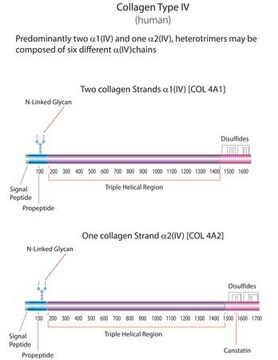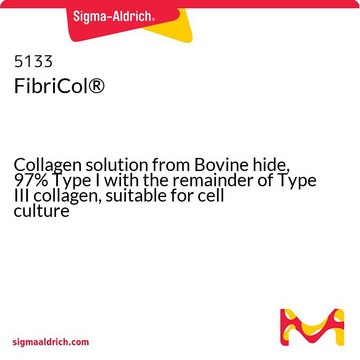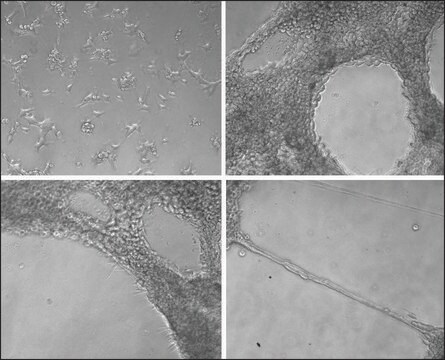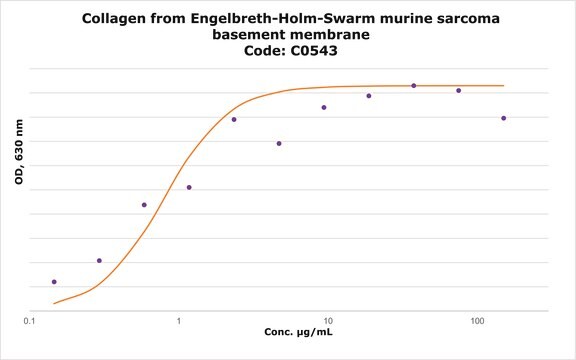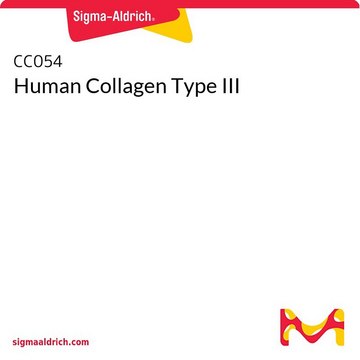H4417
Human Collagen Type IV
from human placenta, liquid, High Performance
About This Item
Productos recomendados
product name
Colágeno from human placenta, Bornstein and Traub Type IV, solution, suitable for cell culture, High Performance
biological source
human placenta
Quality Level
form
solution
technique(s)
cell culture | mammalian: suitable
surface coverage
<5 μg/cm2
impurities
Endotoxin, tested
HIV, hepatitis B and hepatitis C, none detected
storage temp.
−20°C
Gene Information
human ... COL4A1(1282) , COL4A2(1284) , COL4A3(1285) , COL4A4(1286) , COL4A5(1287) , COL4A6(1288)
¿Está buscando productos similares? Visita Guía de comparación de productos
Application
Biochem/physiol Actions
Tissue injury in the autoimmune disease Goodpasture syndrome is due to pathogenic autoantibodies targeting the Collagen IV α3 chain . Mutations in COL4A5 are associated with Alport syndrome.
Components
Caution
Preparation Note
Other Notes
Storage Class
11 - Combustible Solids
wgk_germany
WGK 1
flash_point_f
Not applicable
flash_point_c
Not applicable
Certificados de análisis (COA)
Busque Certificados de análisis (COA) introduciendo el número de lote del producto. Los números de lote se encuentran en la etiqueta del producto después de las palabras «Lot» o «Batch»
¿Ya tiene este producto?
Encuentre la documentación para los productos que ha comprado recientemente en la Biblioteca de documentos.
Nuestro equipo de científicos tiene experiencia en todas las áreas de investigación: Ciencias de la vida, Ciencia de los materiales, Síntesis química, Cromatografía, Analítica y muchas otras.
Póngase en contacto con el Servicio técnico